Last updated: February 6, 2024
A practical guide to planting, growing, and harvesting ginger at home, outdoors or indoors. Growing ginger is not as hard as you may think!
Growing ginger at home is a rewarding and surprisingly simple gardening project that can yield fresh, aromatic ginger right from your garden, balcony, or windowsill.
Whether you’re a seasoned gardener or a curious beginner, the below guide will walk you through the essentials of planting, growing, and harvesting your own ginger.
So, grab a pot, and let’s embark on the journey to grow your very own ginger root, step by step!
Quick navigation:
The Ginger Plant
The ginger you buy from the shops is the rhizome of the ginger plant. A rhizome is the stem of that plant, but instead of growing vertically upwards, it grows sideways.
While the rhizome of a ginger plant will grow mainly underground, it is quite close to the surface of the soil.
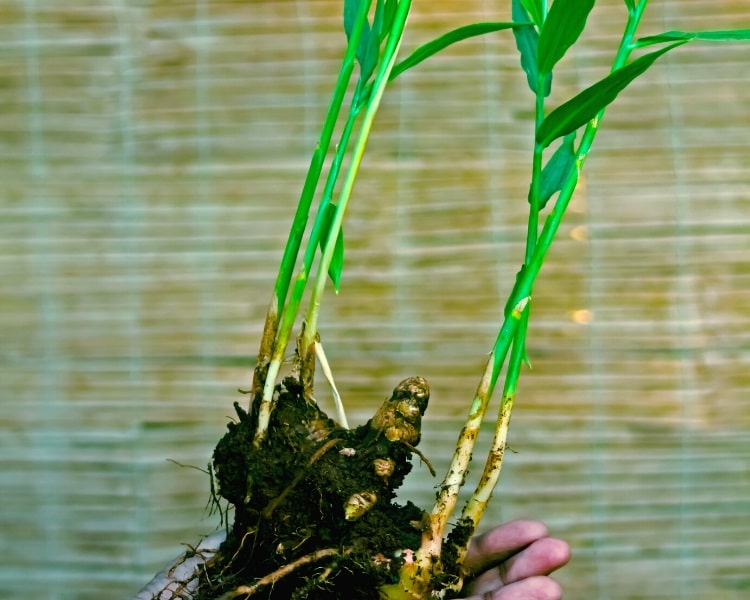
The roots of the ginger plant grow from the rhizome, as well as shoots that grow above the ground. These shoots in some species of ginger can produce beautiful tropical flowers.
Other plants that grow in a similar way to ginger are turmeric, lotus, and bamboo, to name a few.
Different Types of Ginger
With more than 1300 known ginger species in the world, the ginger family of flowering plants is indeed huge.
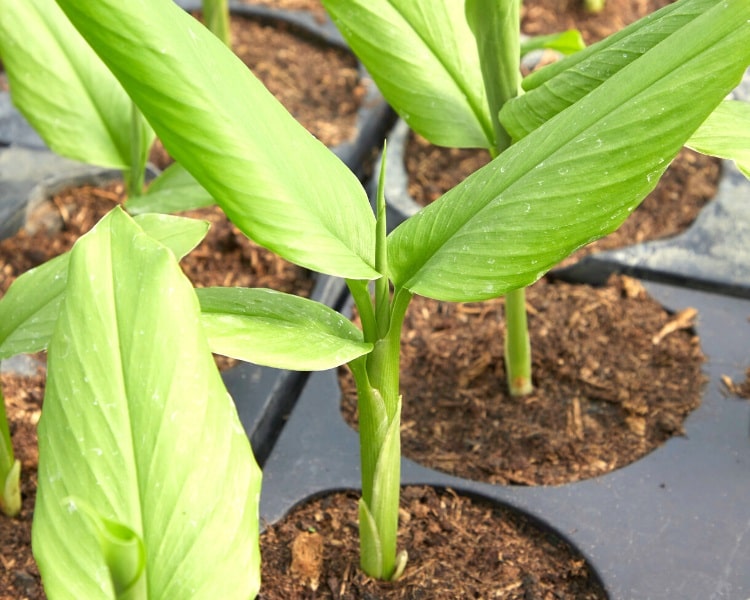
Spices such as turmeric and cardamom are also considered part of the ginger family, as is galangal, also known as blue or Thai ginger. This type of ginger is very popular for flavoring Thai curries and Indonesian Rendang dishes.
However, the most common type of edible ginger is often simply referred to as garden ginger, which is part of the genus Zingiber.
Planting, Growing and Harvesting Ginger
Ginger is usually planted in early spring to take full advantage of the spring and summer heat. A crop of ginger can take roughly 6-10 months to develop, making harvest time around mid/end Fall.
Let’s go through the steps involved in planting, growing, and harvesting ginger in more detail.
1. How to Plant Ginger
Growing ginger from a ginger root is relatively simple, but it is crucial to the success of your final harvest to make sure you select the best root and prepare it correctly.
Selecting the Best Ginger Root
You can purchase ginger roots that are designed for growing, or you can simply use a root from the supermarket.
You can pick the best roots for growing ginger by looking at their “fingers,” which are little points at the cut-off ends and edges of a ginger root.

These are where the green shoots will sprout from to grow leaves and more ginger roots.
Your chosen roots should be firm and succulent, and if those little green shoots have already started to appear, you will also be at an advantage.
Preparing the Ginger Root
There are two areas of thought when it comes to preparing your ginger for planting. Growing ginger requires the root to undergo special treatment before planting it into its final spot in the garden (or container).
The first step is to soak your ginger root in warm water overnight, especially if you have purchased it from the grocery store. This is to remove any pesticides or growth chemicals your ginger may have come in contact with.
The second step is to give your ginger a kickstart by growing it in a healthy, nutrient-rich medium before transplanting it into your garden.
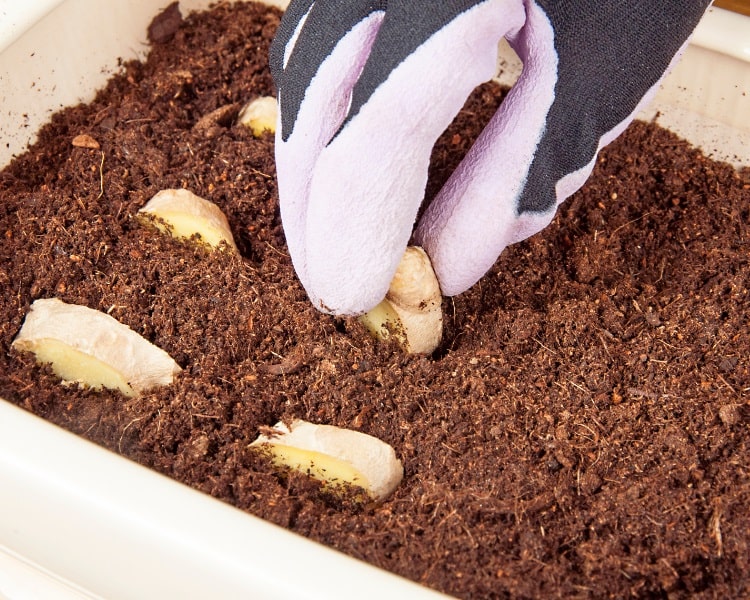
One good tip is to start ginger roots in containers filled with sphagnum moss. You can use this moss to strengthen your ginger plant by growing fleshy roots to help it absorb nutrients before transplanting it into your garden or pot.
Otherwise, if you have the perfect nutritious soil already set up, well-composted, and with just the right amount of moisture, you may be able to plant your ginger root directly into the soil.
If you are planting a ginger rhizome, you can either plant the whole thing or cut or break it up into sections to grow multiple plants. Each rhizome should be planted 5-10 cm deep into the soil with enough space between them. Remember, ginger grows sideways!
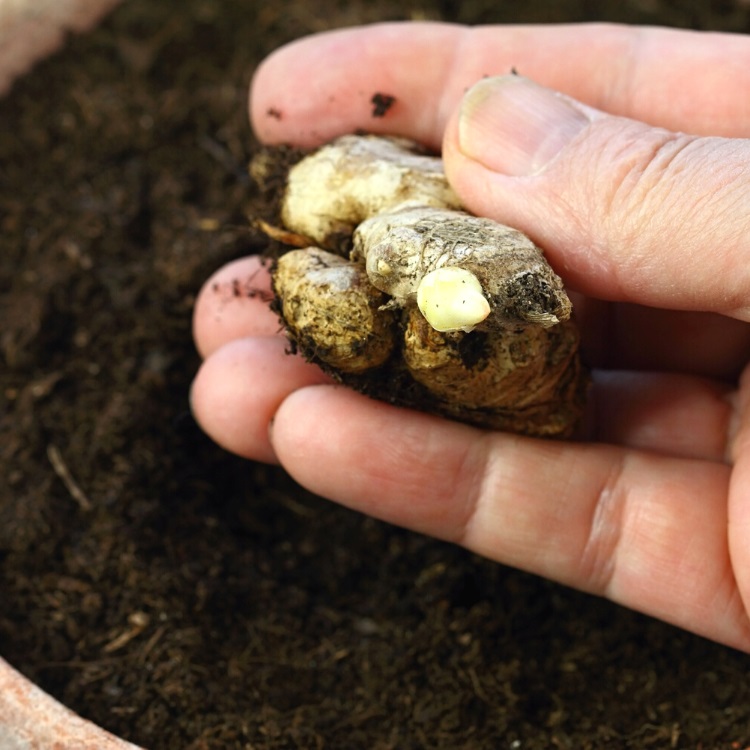
If there are buds or leaves already growing on the rhizome, these should be facing up towards the sky. If you are planting in the garden, putting a nice layer of mulch on the top will help feed your plant with more nutrients.
It’s not a bad idea to stagger your planting times so that you will always have some ginger growing on the go rather than waiting for another 6-10 months for your next harvest.
2. How to Grow Ginger
As mentioned above, ginger does need a humid environment for healthy growth, but the soil does not need to be saturated.
A generous watering once or twice a week may be enough for your plants, and you should determine this by regularly checking how moist the soil is.
You will need to mist the leaves and stem of the plant every 1- 2 days to maintain humidity.
Should I Fertilize Ginger?
While it’s not critical if you have good nutritious soil to begin with, growing good ginger can benefit from regular fertilizing.
Using fertilizers, such as chicken manure, also has the double benefit of slowing and killing off root-knot nematodes.
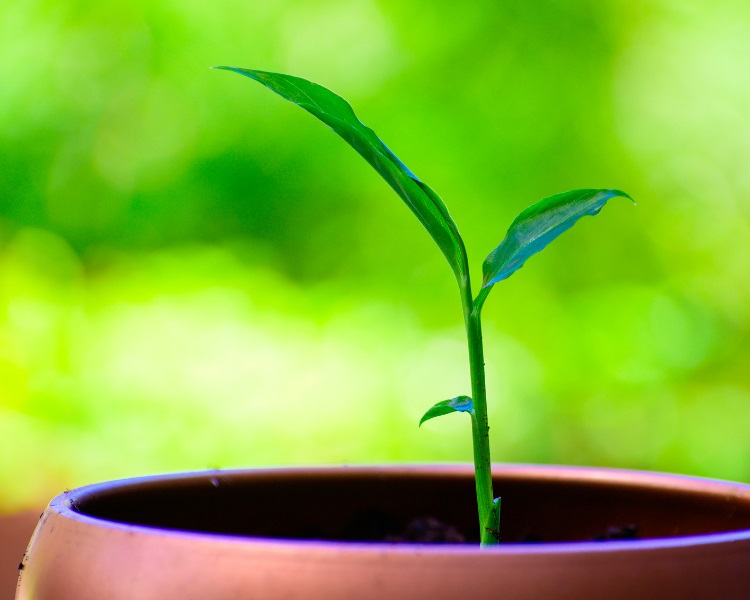
If you have used a decent mulch on top of the soil, then fertilizing may not be as important as the ginger will be getting its nutrients from the mulch.
A good mulch mixture for ginger can be made from a mixture of horse manure and worm castings (worm poo).
Another option is to use an organic liquid fertilizer.
3. How to Harvest Ginger
Ginger roots start growing at around two months from planting and will mature at around 6-10 months.
Your ginger will be ready to harvest after flowering when the leaves have dried out and are starting to fall off.
It is possible to harvest small parts of the ginger at a time by carefully digging up the ends of the ginger root and cutting off a small part of the rhizome to use, and then re-planting the rest.
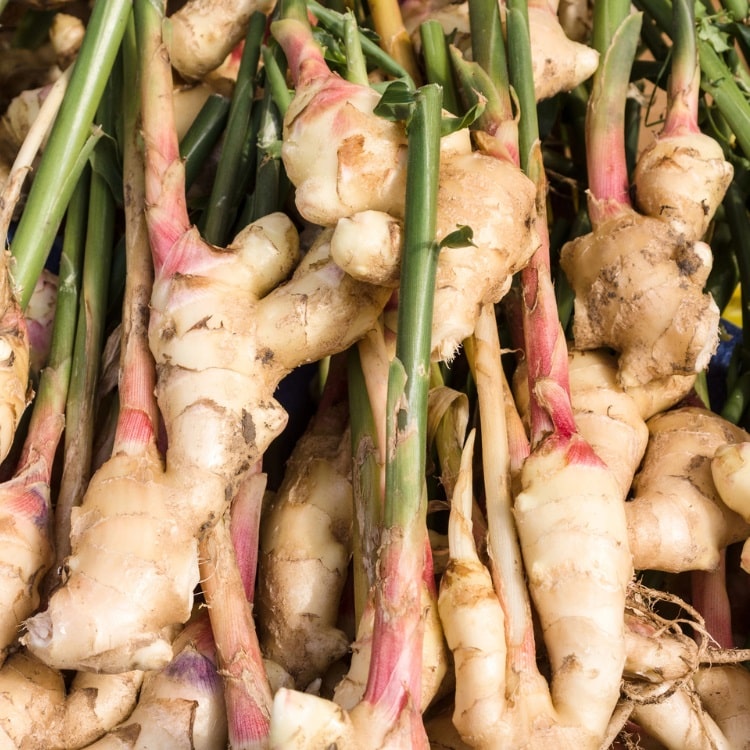
You may find that bits of ginger rhizomes will grow up through the surface of the soil, which can be broken or cut off and harvested before the rest of the plant.
If you are ready to harvest the whole plant, gently dig it up with a gardening fork and check that the roots are well-developed. The plant itself must also be well-defined before harvesting. It can be tempting to harvest early, but patience is very important.
Once you’ve harvested and are ready to use your ginger, it’s essential to store any remaining bits wisely. Read my guide with tips to keep ginger fresh for some practical storage ideas.
And if you’re interested in learning more about different ways to serve ginger, check out my article outlining the various ginger cutting methods for a complete guide.
Here is a great video about planting, growing, and harvesting ginger:
Tips for Growing Ginger
Now that you know how to plant, grow, and harvest ginger at home, let’s look at some practical tips to help you with your project.
Best Climate Conditions for Growing Ginger
Ginger is a plant that loves humidity, so it tends to thrive in a more tropical environment. Keeping your ginger plant in an area with dry air may also attract more pests, such as spider mites.
The best spot for a ginger plant is warm, humid, and with filtered or indirect sunlight. The ideal temperature for planting ginger is about 77 degrees Fahrenheit.

You also want to ensure your ginger plant is not overly exposed to strong winds. Ginger develops mostly below ground and requires adequate soil coverage to grow properly.
Too much exposure to wind and rain will cause soil erosion, which will result in the ginger roots being too exposed to the elements.
How to Grow Ginger in Cold Climates
Ginger is primarily a tropical plant. Therefore, it should come as no surprise that most of the world’s ginger is produced in Central Asia, including countries such as India, Thailand, and Vietnam.
If you are in a colder part of the world, particularly where you may encounter cold, dry winters and frost, you may consider trying to grow ginger indoors.
If you do live in a colder climate, it may be best to try growing your ginger indoors using an indoor planting setup. Growing ginger indoors means you can have greater control over the temperature and other growing conditions.
It is possible to get an indoor growing kit, which will assist in regulating the amount of heat, sunlight, and humidity required to grow a good harvest.
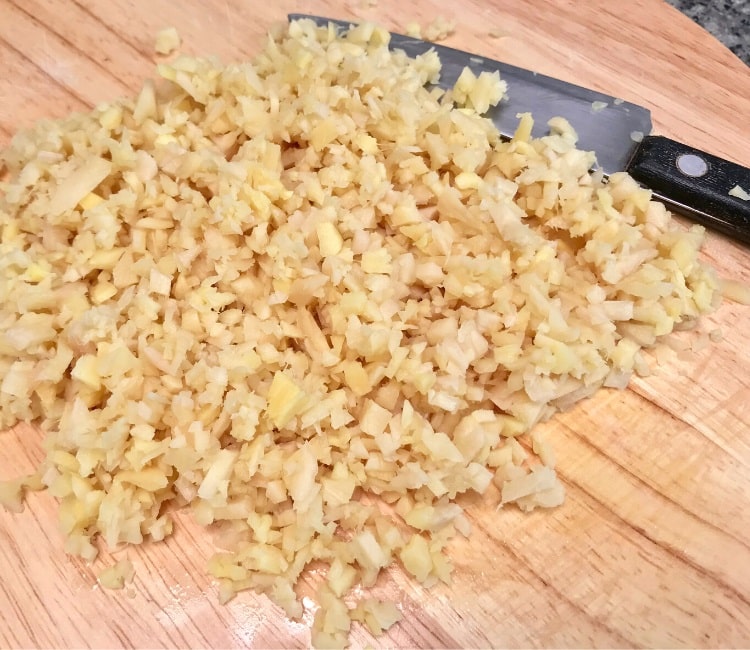
UV growing lights are an inexpensive investment and are one of the best and easiest ways to provide heat and sunlight for indoor plants.
Creating a nice humid environment for your ginger is important for good growth. Indoor areas tend to have drier air than outdoors, so growing tropical plants indoors can be challenging.
If you have the space, you can create a DIY greenhouse area in your home. This may be achieved by using an indoor humidifier that can be easily set up in any room.
Best Soil for Growing Ginger
The soil you are using dramatically affects how well your ginger grows because the ginger plant needs very nutritious soil.
According to the University of Hawaii, the soil you choose should be mildly acidic, which is typical for tropical plants. Soil with a pH level of 5.5 – 6.5 is optimal for growing ginger.
The soil you choose should also be moist but well-drained, as too much water can cause your ginger plant to rot.
The best way to create this balance is to add a sandy or loam mixture to your soil. A good soil mixture can consist of one part sand with one part compost.
The sand assists with keeping the soil dry, while the compost feeds the soil, breeding good nutrients for your plant.
The soil should also be well-sanitized and free of pests, parasites, or fungal pathogens that may otherwise bring disease to the root.
Pests and Diseases
Fusarium, which is a disease contracted from soil, causes rot and wilting. Because the best part of the ginger plant is the rhizome and roots, fusarium can have a disastrous effect on your plants.
You can prevent this by ensuring you select well-sterilized soil that is free from fungal pathogens and parasites.
Nematodes
Root knot nematodes are another nasty pest that likes to feed on your ginger. They can be tricky to get rid of completely but can be controlled so that their damage to your ginger plants is limited.
The presence of these little worms can be found on your ginger rhizomes. Discoloration, warty lumps, and unnatural grooves may be signs of an infestation. They tend to be more common in big outdoor crops, but they are soil-borne, so if you bring outdoor soil indoors, you may be at risk.
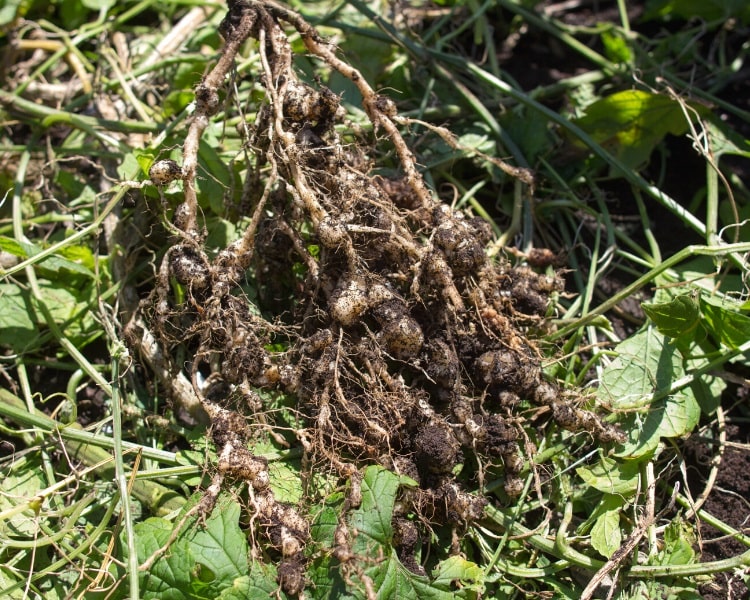
If you are planning to do a lot of planting in one area, mainly using the same soil, you may want to consider crop rotation.
Crop rotation is where you plant one harvest, and the next harvest is a plant that is far less susceptible to the effects of the nematodes or even contains substances that kill them.
The Brassica genus of plants have a good reputation for killing off nematodes, and these include tasty plants like cauliflower, broccoli, kale and many other edible crops.
Adjusting your harvesting timeline can also have an effect, as can heating up the temperature of the soil with a process called soil solarization.
This means that you cover the soil around your ginger plants with a plastic sheet, which traps the heat from sunlight inside your soil, killing off the nematodes.
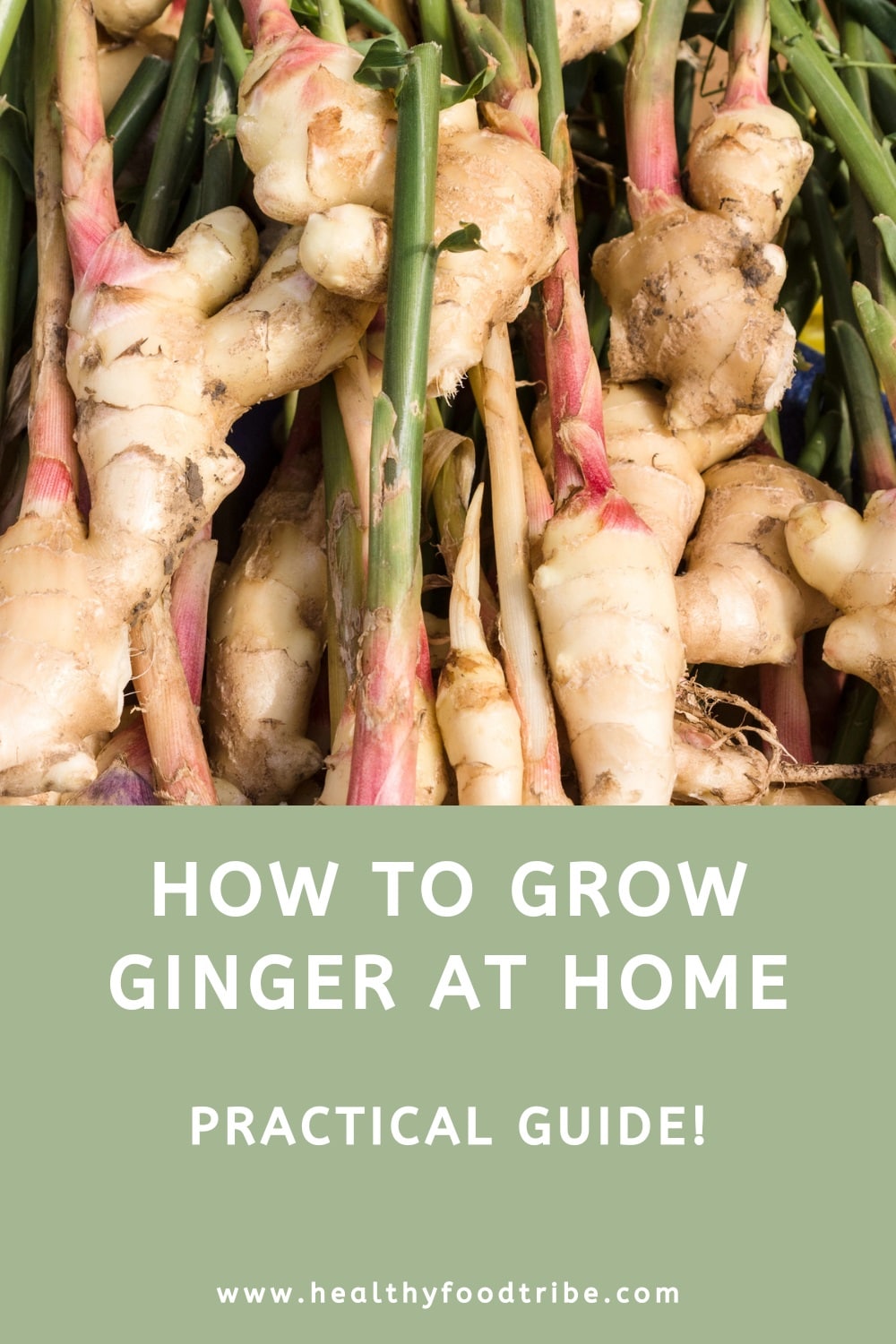
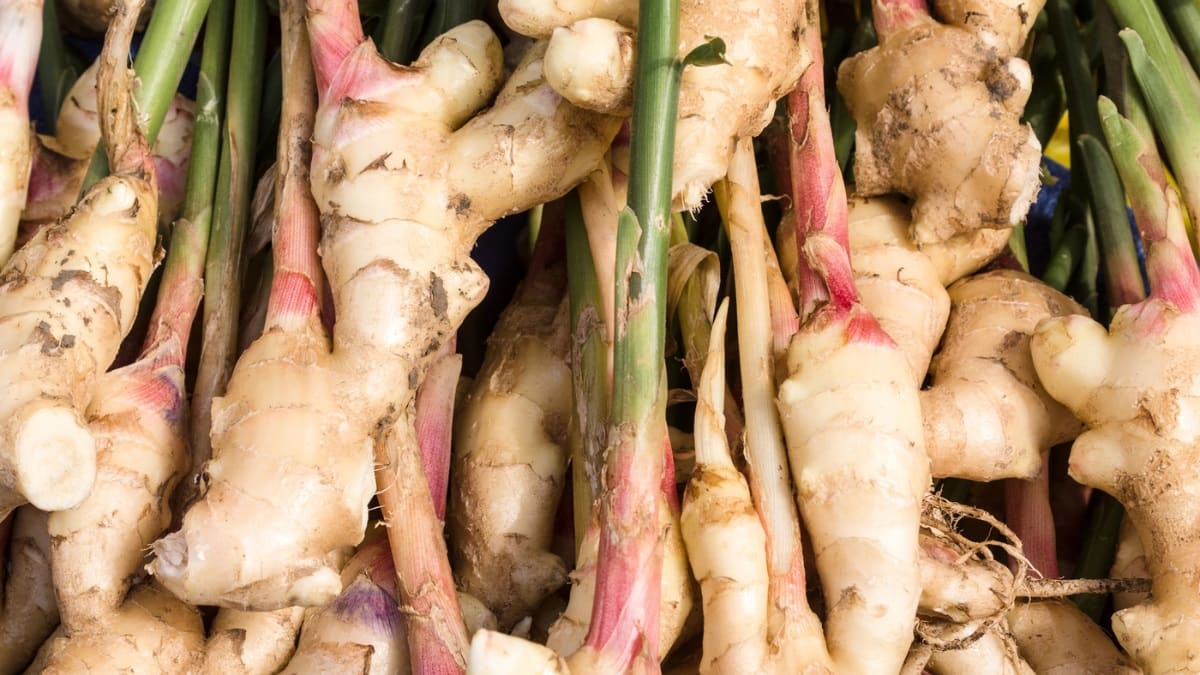
Very useful indeed. I’m planting ginger for the first time, and it’s going well.
Thanks Murphey, glad to hear you’ve found the info useful. Growing ginger is both fun and rewarding.
It’s a complete article. I live in India and it’s been 7 months since I planted some ginger. I will take your hints on harvesting them. Thank you.
Thanks so much Radhika, glad you found it useful!
Very well written article, a complete guide for how to grow and maintain a ginger plant. I will definitely follow your tips and try to grow it at home.
Thanks so much Aradhana, and good luck with growing ginger at home, it’s fun!